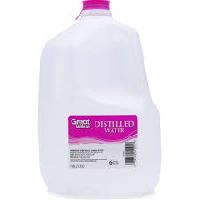
Reverse Osmosis Water
Industrial reverse osmosis use spiral wound membranes mounted in high pressure containers. The membrane stack is two, very long semipermeable membranes with a spacer mesh between them that is sealed along the two long sides. This is then wound up in a spiral tube with another spacer to separate the outside of the stack. The spiral winding provides a very high surface area for transfer. Between each membrane layer is a mesh separator that allows the permeate (pure) water to flow. Water is force in one end of the spiral cylinder and out the out other end. Backpressure forces the water through the membrane where it is collected in the space between the membranes. Permeate then flows around the spiral where it is collected in the center of the tube.
...more
purified water
We are producing RO Water with the state of art RO Plant and RO water shall be pure, hygienic and less mineral content and suitable for drinking and other industrial applications.
...more
Distilled Water
Distilled water, A Demineralisation Plant consists of two pressure vessels containing cation and anion exchange resins. Various types of ion exchange resins can be used for both the cation and the anion process, depending on the type of impurities in the water and what the final water is used for.Typically, the cation resin operates in the hydrogen cycle. The cations in the water (i.e. calcium, magnesium and sodium) pass through the cation exchange resin where they are chemically exchanged for hydrogen ions.The water then passes through the anion exchange resin where the anions (i.e. chloride, sulphate, nitrate and bicarbonate) are chemically exchanged for hydroxide ions.The final water from this process consists essentially of hydrogen ions and hydroxide ions, which is the chemical composition of pure water.
...more
Demineralized Water System
A Demineralisation Plant consists of two pressure vessels containing cation and anion exchange resins. Various types of ion exchange resins can be used for both the cation and the anion process, depending on the type of impurities in the water and what the final water is used for.Typically, the cation resin operates in the hydrogen cycle. The cations in the water (i.e. calcium, magnesium and sodium) pass through the cation exchange resin where they are chemically exchanged for hydrogen ions.The water then passes through the anion exchange resin where the anions (i.e. chloride, sulphate, nitrate and bicarbonate) are chemically exchanged for hydroxide ions.The final water from this process consists essentially of hydrogen ions and hydroxide ions, which is the chemical composition of pure water. The simplified demineralisation plant consists of:Composite resin vessels with charge of strong cation and anion resin; control-panel encompassing a conductivity measurement and alarms, etc; acid and caustic injection facility from bulk, semi-bulk or carboy containers.
...moreBe first to Rate
Rate This